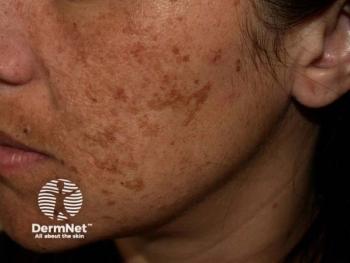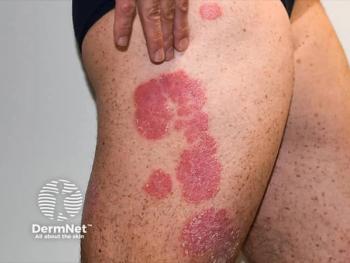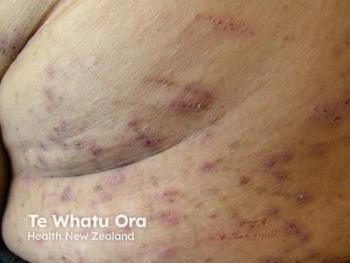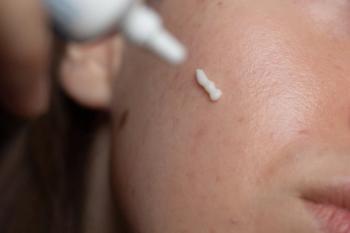
Global Survey Uncovers Misalignment in AD Treatment Guidelines for Pregnant Women
Key Takeaways
- Survey reveals misalignment between guideline recommendations and prescription patterns for AD treatment in pregnant and breastfeeding women.
- Antihistamines are widely used despite not being recommended by European guidelines for AD treatment.
New survey data reveals gaps in atopic dermatitis treatment for pregnant women, highlighting the need for updated guidelines and better physician education.
A new survey has analyzed AD treatment practices in a vulnerable population of pregnant and breastfeeding patients.1 It was found that guideline recommendations and prescription patterns do not align, indicating an international unmet need.
With changes in hormone levels and cytokine balance, AD is the most common skin disease that occurs during pregnancy by up to 50%.2 Existing patients with AD also have a risk of worsening disease when becoming pregnant. Due to a lack of safety data, AD treatment options for pregnant women are limited
The survey was conducted from June 10, 2023, to November 23, 2023. Data came from 103 physicians, dermatologists, and allergologists from 32 countries who consistently treat pregnant and lactating women with AD. Most respondents were from Asia and Europe, with Thailand being the most represented country (n = 25).
All were enrolled in the Global Allergy and Asthma Excellence Network’s (GA2LEN) ADCARE initiative, the largest multidisciplinary network of research centers and clinical care in allergy and asthma. The electronic 6-question questionnaire focused on systemic agents in these patients. Topical agents and phototherapy were not included.
Antihistamines were the most used systemic drug by about 90%. Mostly non-sedating antihistamines were preferred. However, these are not recommended for the treatment of AD by the European Task Force on Atopic Dermatitis (ETFAD) and the current European Guidelines for Atopic Dermatitis (EuroGuiDerm) guidelines. Fewer providers considered the use of systemic agents for the first trimester compared to later in pregnancy. Short-term use of systemic corticosteroids was preferred by 42.5% of the cohort for acute flares but only 25% of the physicians considered using them in the first trimester.
Nearly 50% of providers considered biologics to be a possible option, even though they are not currently licensed for use in pregnancy. Dupilumab was the drug of choice (n = 42), followed by tralokinumab (n = 9). Similarly, fewer considered biologics to be a treatment option for the first trimester.
“Compared to Asia, in Europe, a higher proportion of physicians tend to favor the use of biologics, indicating possible differences in attitudes towards systemic treatment during pregnancy and breastfeeding across cultures. In addition, varying access to modern systemic agents and different reimbursement policies by health insurance providers in the respective regions could play a role,” the investigators noted.
Systemic immunosuppressants like cyclosporine and azathioprine were considered by 23.5% of surveyors. Cyclosporine, which is recommended by both the ETFAD and EuroGuiDerm guidelines as first-line treatment, was rarely the preferred drug in the group (1.25%). Long-term corticosteroid use was rarely considered and over 33% did not use any systemic agent in this vulnerable population. Only 6 surveyors reported complications associated with the use of systemic therapies, including prematurity, preterm delivery, malformations, fetal loss, and unspecified complications
“The discrepancies observed in our survey responses are likely attributable to varying levels of expertise among respondents, regional differences in the treatment of pregnant and breastfeeding patients, and concerns among physicians and patients about potential side effects and complications, such as renal failure associated with cyclosporine therapy,” the researchers wrote.
With this survey, it is evident that physicians do not consistently follow current recommendations for systemic treatment. Updated guidelines should take regional practices into account, especially related to medication access and insurance policies. These findings can guide educational programs, support treating physicians, and potentially establish a global consensus of optimal AD treatment methods for this patient population.
References
1. Pereira MP, Stevanovic K, Kocatürk E, et al. International survey of treatment practices for atopic dermatitis in pregnant and breastfeeding women: Physician perspectives. J Dtsch Dermatol Ges. Published online June 8, 2025. doi:10.1111/ddg.15728
2. Balakirski G, Novak N. Atopic dermatitis and pregnancy. J Allergy Clin Immunol. 2022;149(4):1185-1194. doi:10.1016/j.jaci.2022.01.010
Newsletter
Like what you’re reading? Subscribe to Dermatology Times for weekly updates on therapies, innovations, and real-world practice tips.


















